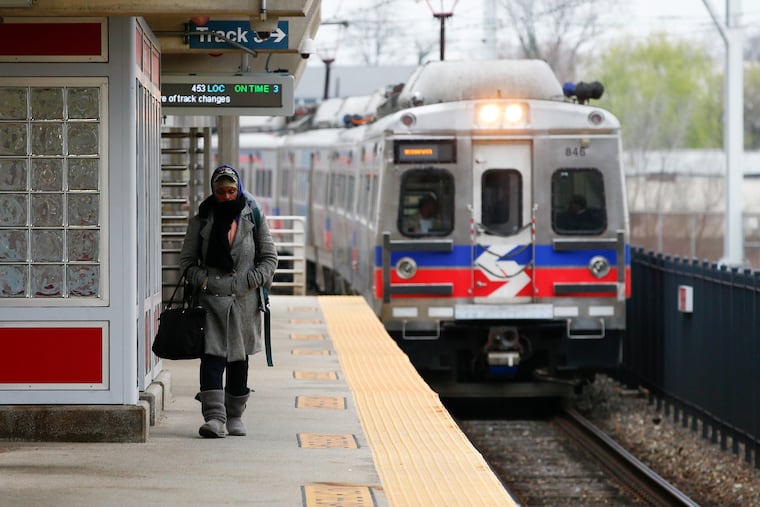SEPTA is following through on employee suggestions that could save $117M a year
“It’s imperative that we get more efficient,” SEPTA board Chairman Pat Deon said.

SEPTA’s sweating it out. That salted-away federal pandemic aid won’t last forever.
So the transit agency is adopting operational cost-cutting ideas generated by hundreds of employees, from better timing trash collection at stations to reduce the cost of waste haulers to activating software in 1,400 hybrid-electric buses to save diesel.
All told, SEPTA could save $117 million a year when all 150 suggestions are implemented, according to projections by authority officials and McKinsey & Co., the consultancy that helped structure the yearlong brainstorming effort.
The task takes on new urgency because ridership hasn’t rebounded as much as SEPTA thought it would by this time, and state and federal transit funding levels are uncertain. Buses, subways, and trolleys are carrying 49% of the passengers they did in 2019, before the pandemic. Regional Rail is at 29%.
“It’s imperative that we get more efficient,” SEPTA board chairman Pat Deon said in an interview. “The clock’s running, and it all depends on how well we manage our money.”
The state legislature hasn’t budged on a new system for funding public transit services, and President Joe Biden’s bipartisan infrastructure bill is stalled in Congress amid power struggles over the national debt limit and clashing priorities among Democratic lawmakers.
» READ MORE: Will Harrisburg Republicans save SEPTA and other transit agencies in time?
But SEPTA’s effort is about more than political cycles and the perennial transit funding problems. The agency hired McKinsey last October on a $7 million contract to help it make systemic changes to survive long term, even as it tries to figure out what a post-COVID-19 transit agency should look like, without many data points.
“We may be hit by a meteor — after the last couple years, who the hell knows?” Deon said, joking about the difficulty of decision-making during the pandemic’s ups and downs. “We need to be able to react quicker, and need to have a more nimble [transit] service and staff.”
Some transit advocates have ripped SEPTA for spending so much on McKinsey’s advice when a shortage of bus drivers is causing delays on many routes. Last year, the management firm did a similar study for the Metropolitan Transit Authority in New York to explore possible post COVID-19 scenarios. It’s also worked with Washington’s Metro system and the London transit network.
» READ MORE: SEPTA passes a budget intended to draw back riders
SEPTA’s hybrid buses came with software that helps maximize fuel efficiency, in a manner similar to the “eco mode” in many cars, but it hasn’t been installed. Employees in the bus division suggested using the software, which toggles between battery and diesel power to find maximum efficiency when a bus accelerates.
“Acceleration uses a lot of fuel, so when you smooth that out you’ll save,” said Erik Johanson, director of SEPTA’s operating budget, who worked closely on the effort.
Over the entire fleet, the software is projected to reduce diesel consumption 5%, saving $1.6 million a year. Installation should be finished this month. About half the buses in the Callowhill depot are using it already, and SEPTA general manager Leslie S. Richards said operators have not reported any dip in vehicle performance.
The agency also plans to audit health benefits to ensure beneficiary information is up to date, potentially saving $4.5 million a year, based on experiences of other transit agencies and government departments.
Among the other ideas: Having SEPTA employees make gear boxes themselves; the part has tripled in cost during the supply-chain snarls of the pandemic. Expected savings: $193,000 yearly. Agency technicians for years have been building parts for Market-Frankford Line trains, which are safe but old enough that replacement parts can’t be found.
“One way to look at the whole program is we’re tapping into that culture and ethic of being scrappy and trying to export it across the whole organization,” Johanson said. “And giving them a green light to do it.”
» READ MORE: SEPTA launches effort to bring Regional Rail fares closer to bus, subway, and trolley services
About 1,000 SEPTA employees contributed ideas during the yearlong process. McKinsey trained workers how to build a business case for a proposal and prepared 300 employees to be “initiative owners,” responsible for implementing changes, said Elizabeth Smith, SEPTA’s chief administrative officer.
Down the road, SEPTA hopes to save $48 million through employee schedule changes and redeployments across departments. No layoffs are planned, Johanson said. Streamlining procurement is expected to save $22 million a year.
All 150 ideas are scheduled to be implemented by October 2024. The idea is to keep going beyond that, so SEPTA is setting up an internal innovation office.
“We’re looking at the long game,” said Smith, who also worked on the program. “This wasn’t an outside consultant coming in and telling people how to do their job better. It was an outside consultant coming in and helping them figure out how to do their job better.”
Said Richards: “There’s a lot of uncertainty out there, but I can tell you we are going to look different in the next few years.”